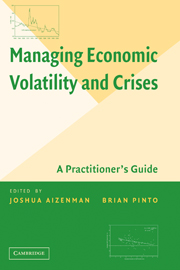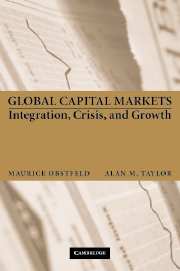Managing Economic Volatility and Crises
Economic volatility has come into its own after being treated for decades as a secondary phenomenon in the business cycle literature. This evolution has been driven by the recognition that non-linearities, long buried by the economist's penchant for linearity, magnify the negative effects of volatility on long-run growth and inequality, especially in poor countries. This collection organizes empirical and policy results for economists and development policy practitioners into four parts: basic features, including the impact of volatility on growth and poverty; commodity price volatility; the financial sector's dual role as an absorber and amplifier of shocks; and the management and prevention of macroeconomic crises. The latter section includes a cross-country study, case studies on Argentina and Russia, and lessons from the debt default episodes of the 1980s and 1990s.
- Combines practitioner standpoints with leading academic economist perspectives
- Includes numerous internationally known scholars from North America and Europe, the IMF, and the World Bank
- Accessible for MBAs, masters-level students in international economics and finance
Product details
April 2011Paperback
9780521168595
614 pages
229 × 152 × 35 mm
0.89kg
Available
Table of Contents
- Contributors
- Acknowledgements
- Foreword
- Overview Joshua Aizenman and Brian Pinto
- Part I. What Is Volatility and Why Does It Matter?:
- 1. Volatility: definitions and consequences Holger Wolf
- 2. Volatility and growth Viktoria Hnatkovska and Norman Loayza
- 3. Volatility, income distribution, and poverty Thomas Laursen and Sandeep Mahajan
- Part II. Commodity Prices and Volatility:
- 4. Agricultural commodity price volatility Jan Dehn, Christopher Gilbert, and Panos Varangis
- 5. Managing oil booms and busts in developing countries Julia Devlin and Michael Lewin
- Part III. Finance and Volatility:
- 6. Finance and volatility Stijn Claessens
- 7. Evaluating pricing signals from the bond markets John J. Merrick, Jr
- Part IV. Managing Crises:
- 8. Managing macroeconomic crises: policy lessons Jeffrey Frankel and Shang-Jin Wei
- 9. Lessons from the Russian crisis of 1998 and recovery Brian Pinto, Evsey Gurvich, and Sergei Ulatov
- 10. Argentina's macroeconomic collapse: causes and lessons Luis Servén and Guillermo Perry
- 11. Default episodes in the 1980s and 1990s: what have we learned? Punam Chuhan and Federico Sturzenegger
- Technical appendix Viktoria Hnatkovska
- Index.







